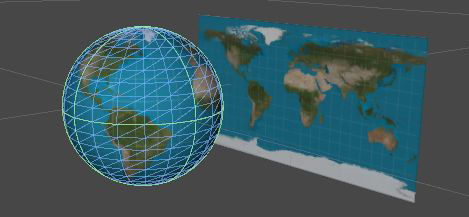Mission
Bublr's metaverse platform is meant to be accessible on any device or any generation. The Oculus Quest 1, while being quite a recent device, is fairly weak in terms of processing power. We were not able to use the default assets on Quest, as they were running too slow and were creating strong discomfort during the experience.
Answer
We had to come up with a solution that provides fast graphics, and also a fast 3D design pipeline. It was not an option to redesign a whole scene, just for a device.
Spherical background
In 3D we use spheres or cubemaps to display far elements, like skies or mountains, which don't require a parallax effect to be nicely accepted by the eye.


These 3D backgrounds can come from 360 cameras, and can also be rendered in 3D.
As the 3D scenes were already designed (including their own spherical background), we rendered again these scenes to convert selected 3D geometries into a spherical projection. Every object with a lot of polygons, and in particular every object which we wouldn't walk closer to, was rendered as a spherical background. We only kept the bare necessary: floor, seats...
We ended up with much lighter scenes, which would render perfectly on Oculus Quest 1.
From the initial 3D:
to the optimized VR version: